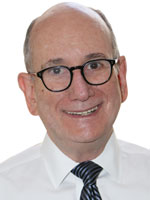Trial lawyers
Changing public perception, one anecdote at a time
Change is hard. Changing public perception is harder. Changing the public perception of trial lawyers is really hard.
Trial lawyers have faced this challenge for decades, but don’t be discouraged. This column will describe some recent developments that prove that while changing the public perception of trial lawyers is hard, it’s not impossible.
There are two parts to this challenge. The first is identifying what you can do. The second is understanding how to tell people what you are doing.
Tips from David Ball
In his popular book, David Ball on Damages, the nationally known jury and trial consultant David Ball gives broad strategies and tips on damages for every stage of a trial. In the last chapter of the book, Ball moves away from trial advocacy and talks about how to change the stereotype of a trial lawyer.
He says, “You need to take control of the way jurors think about you. Not you as a part of a group, but you as an individual attorney.”
Ball continues that “You must let the public see that you are different from the indelible stereotype that many now have of your profession. This task starts long before the first day of trial.”
He then suggests that trial lawyers listen to West Virginia lawyer Jim Lees and “start doing things that help people in ways that do not profit you and find ways to let your community know about them.”
When I first read Ball’s book ten years ago, I had trouble understanding how to apply his counsel to a large association of trial lawyers.
The mission of our charity
But that was before the growth of Los Angeles Trial Lawyers Charities and before we had access to the dramatic power of social media as a communication tool.
Combining the two provides trial lawyers with the most exciting opportunity in decades to actually change how the public perceives them.
As you know, the mission of LATLC is to be a vehicle for trial lawyers to help and support education, children, battered women and people who are homeless in Los Angeles County.
One of its most significant programs identifies volunteer service opportunities for trial lawyers to provide hands-on help and support to organizations in the community.
Last year there were nearly 20 such events. Trial lawyers pitched in for organizations such as Downtown Women’s Center, the Venice Family Clinic, Los Angeles Mission and St. Anne’s Catholic Church. In December, nearly 100 trial lawyers volunteered to hand out full turkey dinners and toys to families and children at the New Prospect Baptist Church in Watts. So far in 2017, there have already been several community events.
Whether you attend an LATLC community event or find one on your own, volunteering for a community event is an example of what you can do to start changing the public perception of trial lawyers. Now comes part two: how do you tell people what you are doing?
On January 17, the Wall Street Journal ran an op-ed column on communication by Merrie Spaeth, a Dallas communications consultant who was President Reagan’s director of media relations.
In the column, she gave advice to politicians that is also very applicable for trial lawyers. She said that to get your message across, facts and figures aren’t enough. You need to learn to put human faces on your policies.
As you know, trial lawyers love facts and figures. But Spaeth writes that emotionally laden anecdotes are better to make your case than impersonal facts and figures.
Spaeth writes “Facts are the background noise of debate and analysis; anecdotes are a message’s most powerful anchors. In the battle for public opinion, personal stories win.”
But how do you share those wonderful images and anecdotes with the public?
That’s where the awesome ability of social media to instantly connect with large numbers of people is giving trial lawyers the opportunity to change the public’s perception of them.
Instead of just talking about how trial lawyers attended an event for So Cal Trykes and gave out tricycles individually retrofitted for disabled children and young adults, photos of Minh Nguyen, Joe Barrett and Alyssa Schabloski and the beaming recipients of the tricycles were distributed via social media.
When trial lawyers took a Thursday morning to prepare lunch for 170 homeless women at the Downtown Women’s Center, LATLC didn’t just put out a fact sheet. Photos of Mike Alder peeling potatoes that were posted on social media were a far more powerful way to show people the good deeds of trial lawyers.
And instead of just reporting the facts about the toy and turkey giveaway last December, internet photos of Dena Weiss and Robert Simon dressed as Santa Claus and Mrs. Claus with wide-eyed young children were emotionally laden anecdotes that exemplified the advice of David Ball.
Each of us carries a high-resolution camera in our pocket, so capturing the images when trial lawyers volunteer at a community service event is easier than ever. A picture (and a social media post) is worth a thousand words.
Stuart Zanville

Stuart Zanville is the Executive Director of the Consumer Attorneys Association of Los Angeles (CAALA). Contact him at (213) 487-1212 or by e-mail: stuart@caala.org.
Copyright ©
2026
by the author.
For reprint permission, contact the publisher: Advocate Magazine
